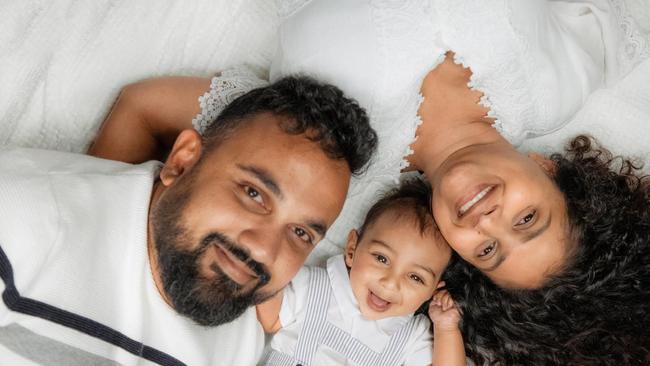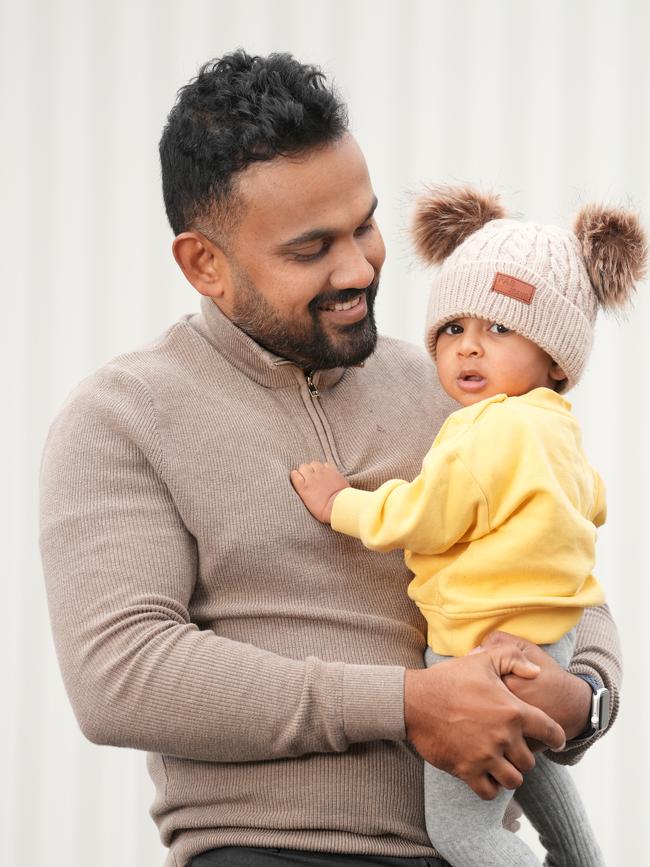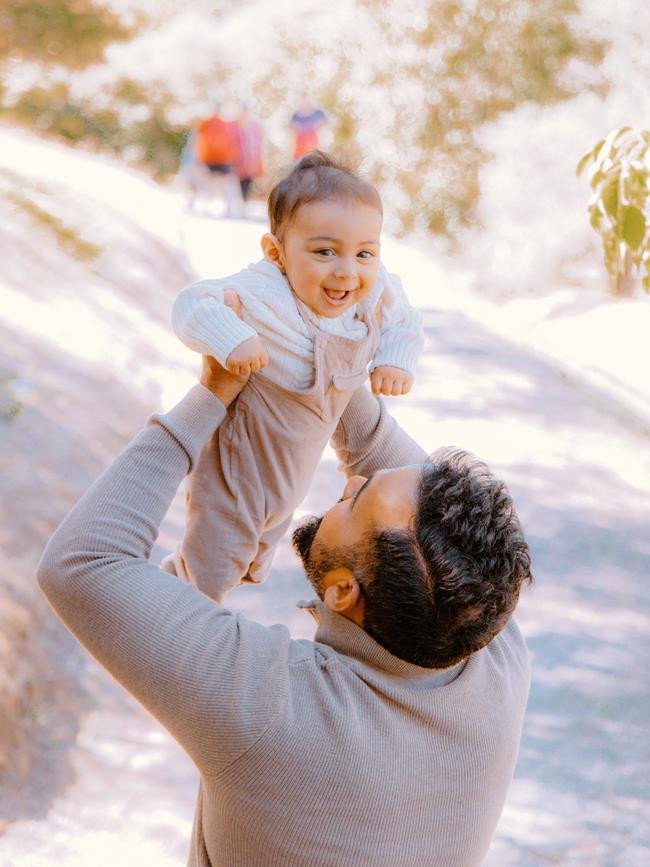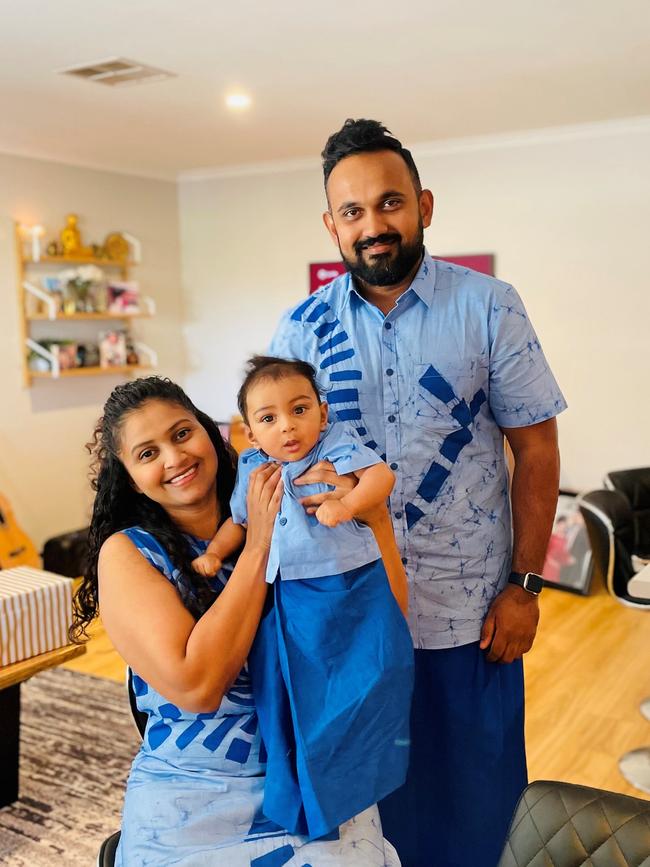Jin Karunanayake shares the realities of being a stay-at-home dad to a new baby
Two months after the birth of his son, Jin Karunanayake’s wife went back to work and he took the next six months off to be the primary caregiver. Here’s what he learned.

SA Weekend
Don't miss out on the headlines from SA Weekend. Followed categories will be added to My News.
When Jin Karunanayake, 36, and his wife, Thrish, 33, found out they were pregnant with their first child in November 2023, they were thrilled. But, like many expectant parents, money was on their minds.
“We had just bought a house before our son, Jayden, was born,” recalls Karunanayake, who lives and works in Adelaide.
“My wife, who is a qualified accountant was entitled to two and a half months of paid leave with her company. I had more capacity than her to look after our baby.”
So, the couple came up with a “mutual arrangement”.
For six months, Karunanayake became the primary caregiver to their baby, who is now eight months old.
Karunanayake was lucky. He works in finance for professional services firm, KPMG Australia, which provides parents with 26 weeks’ flexible paid parental leave, regardless of gender.
This leave can be taken within the first 24 months of the child’s arrival, including adoption, surrogacy, and foster care.


They’ve recently seen a 20 per cent increase in men taking parental leave. Progressive? Yes, but perhaps not for much longer.
In March 2024, the federal government announced changes to Paid Parental Leave, expanding the scheme to six months between now and 2026.
In the NSW public sector, parents can take up to 14 weeks’ paid parental leave. Parents also receive an additional two weeks “bonus leave”, where paid parental leave entitlements are more equally shared between partners.
But, even when “gender blind” parental leave is available, a lot of dads aren’t taking it.
According to the 2024 National Working Families Survey, which surveyed over 6000 working parents and carers, 50 per cent of people agreed that “an employee’s commitment to their job is questioned if they use family-friendly work arrangements”. It’s one thing to have unbiased parental leave on paper … and another thing to destigmatise it. For Karunanayake and his wife, the benefits were obvious from day one.
“My wife had a very hard birth,” he says. “For the first three weeks after she gave birth, only I was looking after the baby. I could manage it because I had no other pressure.”
Thanks to “training” from the hospital, by the time the whole family returned home, Karunanayake says he felt confident to do “the baby work”.


When Jayden was two months old, Thrish returned to the office, initially part-time and then full-time. “She thought it should have been the other way around,” Karunanayake admits. “But she was aware of why we were doing it.”
Every lunchtime, she’d get a video call from home. “She’d send me reminders, like a boss!” laughs Karunanayake. “Did you feed him? But she was very comfortable with me taking care of him.”
Karunanayake’s parents, Jayden’s paternal grandparents, who live in Sri Lanka, understood the decision, although Karunanayake admits it’s “different to the Asian culture … there’s more responsibility on the mother”.
The most interesting reaction was from his mates, especially the experienced fathers.
“At KPMG, I had a few [co-workers] who had taken this opportunity,” Karunanayake says. “But, within my friends, no one had this kind of parental policy in their company. They could only take one or two weeks’ parental leave – and they were surprised.”
When he met dads at the park, they were often squeezing in a “daddy date” between meetings or on a day of annual leave. “They all told me, if they had this kind of opportunity, they’d prefer it,” he says. “They know they are missing so much. I touched all the milestones.”
It all sounds idyllic: father and son enjoying their freedom. But what about the challenges of being a stay-at-home parent? Karunanayake really does seem to have enjoyed himself.
Yes, he was bored, but “I watched a lot of cricket.” He went to the gym every day and “when the baby slept, I did gardening”.
He made friends with mums at playgroup who were warm and friendly “once they had asked me where my wife was”.
Did he worry about his career? “No, I caught up with my manager every month.”
Did he miss getting positive feedback from a boss? “No, people were telling me I was doing a good job.” (Research has found dads do get praised more than mums – just watch strangers coo over a dad with a baby-wearer to see it).


Karunanayake is now back in the office. Shortly before his six months’ leave was over, KPMG did ask if he would like to take any more time off. He graciously declined. “I had a really good time but it was a good time to go back,” he says. “I needed to move on with my career as well.”
To help with his transition back into the workforce, he joined the KPMG Father’s Network – a group of fathers across the company who share advice and resources. He also had a three week “retraining period”, where he had a chance to update his qualifications before “they built my responsibilities – not as hard as previously.”
Every lunchtime, he looks at photos of Jayden on a childcare app (a childcare centre he extensively researched and chose himself “because I had the time to do it”). When daycare germs do the rounds, he and Thrish take turns to stay at home: “If I’m busy, my wife will do it. If my wife is busy, I will.”
I ask Karunanayake about his advice for other dads. “If you have the opportunity to take more leave, then do,” he says. “We can earn money later or get promotions later. It’s different, missing milestones with your child.”
And, don’t wait until you see two blue lines on a pregnancy test to be proactive: have conversations with your male friends, talk to your HR department, bring it up in a job interview.
“Dads are trying more and more,” he says.
“I remember one day going to the shopping centre to change a nappy. In that changing room, there wasn’t a mum there. All were dads! In some places the support is there, but not always at work. We need to ask for it.”




